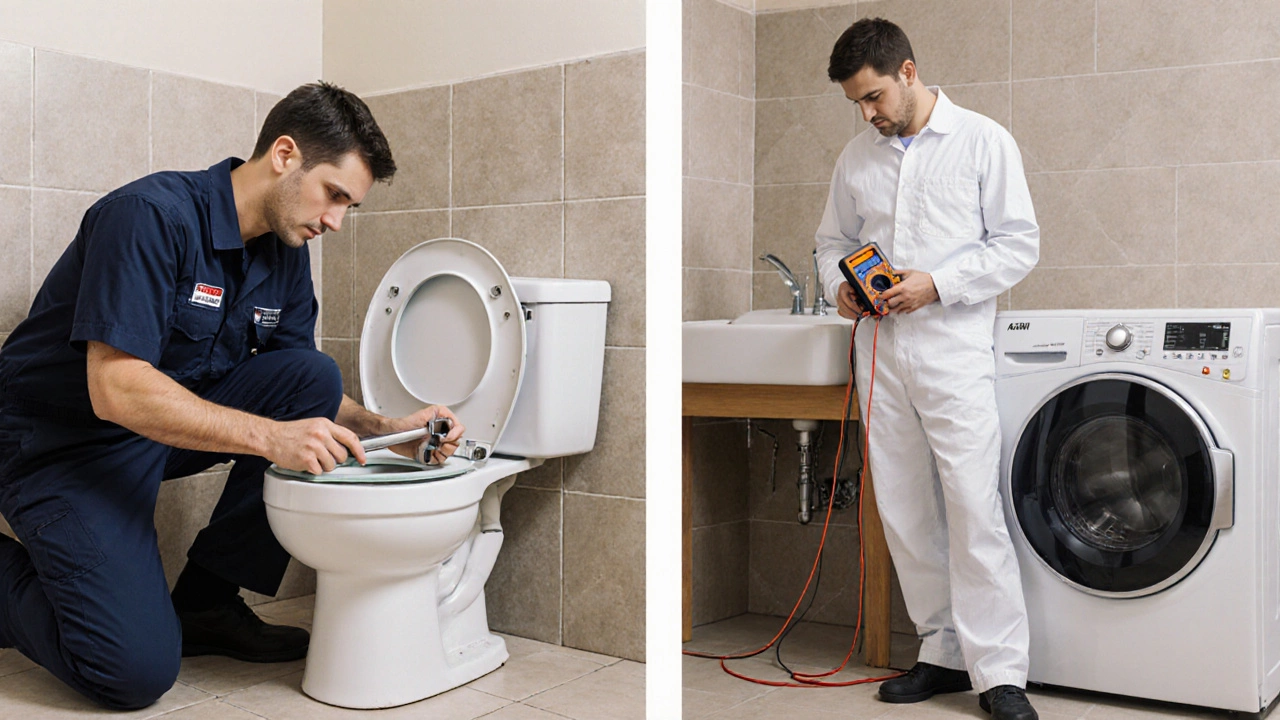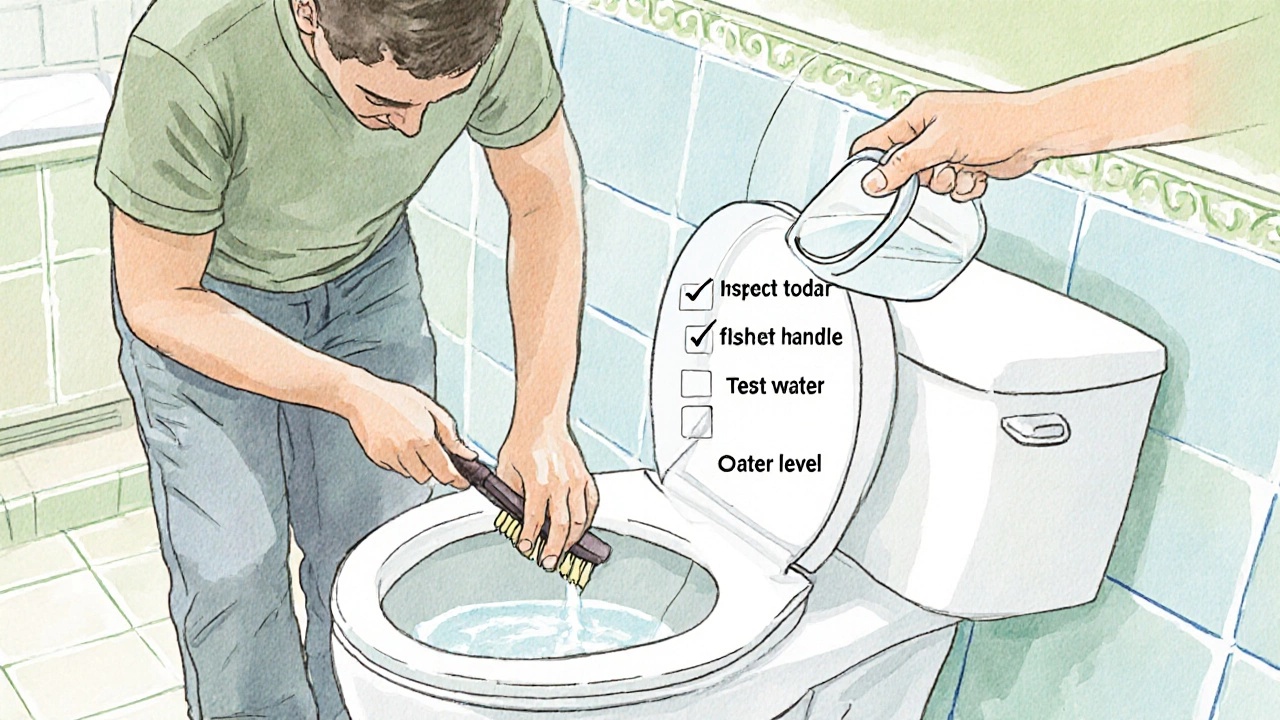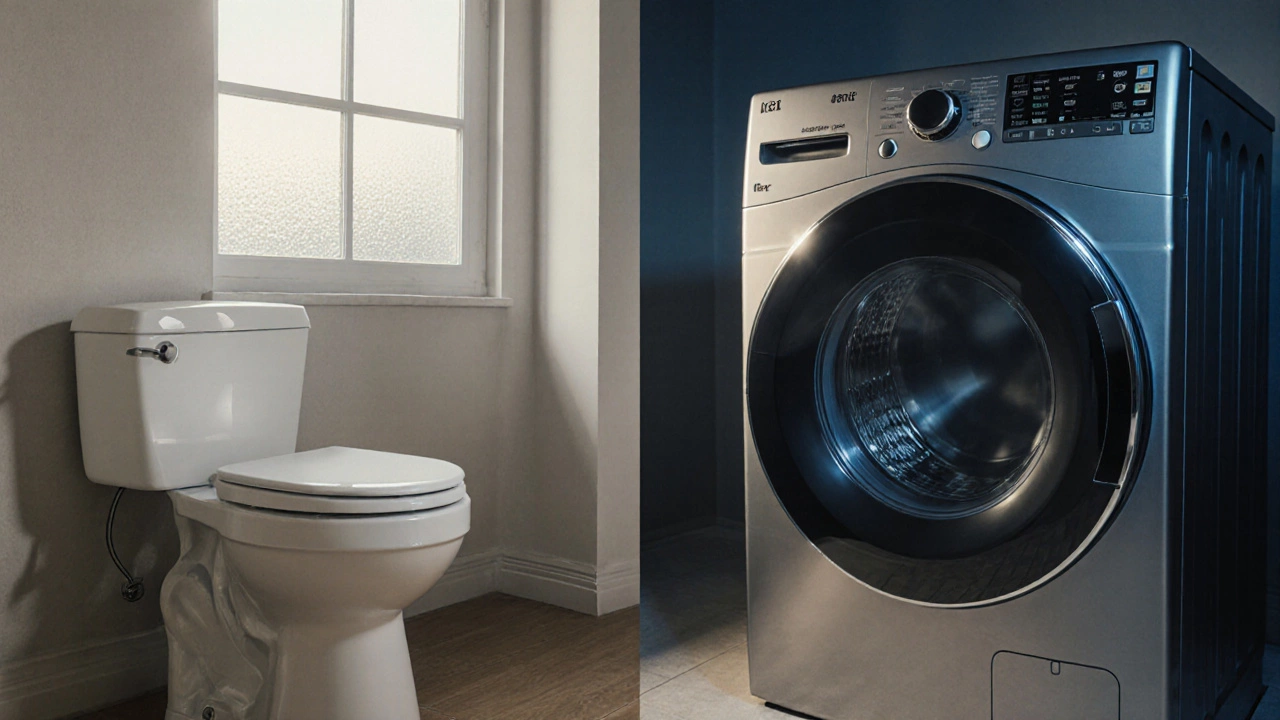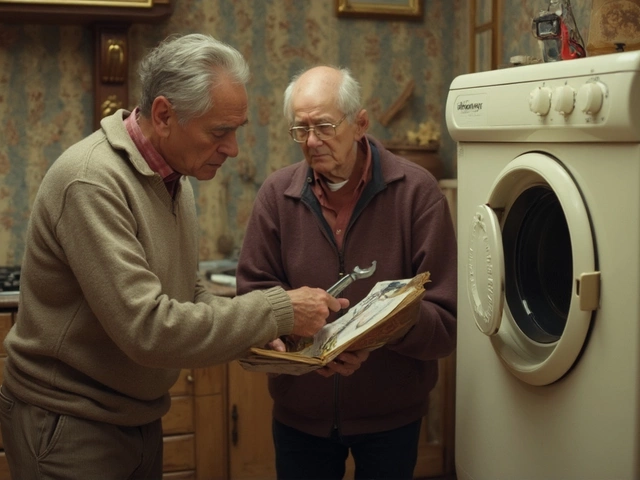Toilet vs Appliance Classifier
This tool helps determine whether a toilet is classified as a plumbing fixture or a household appliance based on key characteristics.
Quick Takeaways
- A toilet is technically a plumbing fixture, not a powered toilet appliance.
- Appliances run on electricity or gas; toilets rely on water pressure and gravity.
- The classification matters for insurance claims, warranties, and service contracts.
- Regular maintenance can prevent costly repairs; know when to call a professional.
- Use the comparison table below to see how toilets stack up against common household appliances.
What Exactly Is a Toilet?
When you hear the word "toilet," most people picture the ceramic bowl, the seat, and the flushing handle. In the world of building codes and industry standards, a toilet is a toilet a sanitary plumbing fixture that disposes of human waste by flushing it into a sewer or septic system. It’s part of the larger plumbing system the network of pipes, valves, and fixtures that deliver clean water and remove waste water in a building.
How Do We Define an Appliance?
An appliance any device that uses electricity, gas, or another power source to perform a specific household task-think washing machines, dishwashers, refrigerators, or even a heated towel rail. The key element is a power source that drives moving parts or heating elements. This definition is used by manufacturers, insurance companies, and even warranty providers to decide what falls under coverage.

Key Differences: Toilet vs. Typical Appliance
Below is a side‑by‑side look at the most important attributes. Understanding these differences clarifies why a toilet rarely appears on an “appliance” checklist.
| Attribute | Toilet (Fixture) | Typical Appliance (e.g., Washing Machine) |
|---|---|---|
| Primary Power Source | Water pressure & gravity | Electricity (or gas) |
| Mobility | Fixed to floor, not mobile | Usually portable or on rollers |
| Energy Rating | Not applicable (no electricity) | Energy Star, kWh/year |
| Typical Warranty Length | 1‑3years (often limited to the bowl) | 5‑10years for major components |
| Common Repair Services | Plumber or sanitary‑ware specialist | Appliance technician, often with brand‑specific parts |
| Insurance Classification | Fixture (often covered under “building -structure”) | Appliance (usually a separate line‑item) |
Why the Classification Matters
If you’re filing a home‑insurance claim after a burst pipe, the insurer will ask whether the damaged item is a “fixture” or an “appliance.” Fixtures are typically covered under the dwelling‑coverage portion of a policy, while appliances may fall under personal‑property coverage or a specific appliance endorsement. Mixing the two can lead to denied claims or lower payouts.
Warranty providers follow a similar rule set. A toilet’s limited warranty usually covers defects in the porcelain or flushing mechanism, but not plumbing‑related issues like a cracked water supply line-that’s the plumber’s job. In contrast, a dishwasher’s warranty may cover the motor, pump, and electronic controls.
Even when you hire a repair service, the pricing structure differs. Plumbers charge for labor and parts based on code‑required fittings, whereas appliance technicians often quote a flat rate plus parts markup.
DIY vs. Professional Repair: When to Call a Pro
- Simple clogs: A plunger or a chemical-free drain cleaner can often clear minor blockages.
- Leaking base: If water pools around the bowl, the wax seal may need replacement-a job best left to a licensed plumber.
- Flapper or flush valve failure: Many homeowners can replace these components themselves with a basic toolkit.
- Cracked tank or bowl: This is a full replacement scenario; attempt only if you have the proper tools and a replacement unit.
- Water‑hammer or noisy fill valve: Adjusting the fill valve or installing an air chamber can be DIY, but persistent noise may indicate deeper pipe issues.
When in doubt, check the repair service a licensed professional who specializes in plumbing or sanitary‑ware maintenance directory in your area. Most will provide a free estimate and explain whether the work falls under a warranty or a service call.

Maintenance Checklist to Keep Your Toilet Running Smoothly
- Inspect the flush handle and chain monthly; adjust or replace if you notice lag.
- Test the water level in the tank. It should sit about 1inch below the overflow pipe.
- Clean the rim holes with a small brush and a vinegar solution to prevent mineral buildup.
- Run a cup of baking soda followed by vinegar once a month to keep the drain clear.
- Check for hidden leaks by placing a few drops of food coloring in the tank; if the bowl changes color without flushing, the flapper may be leaking.
- Schedule a professional inspection every 2‑3years, especially if your home’s plumbing is older than 25years.
Frequently Asked Questions
Is a toilet covered under a home‑appliance warranty?
Usually not. Most manufacturers ship the toilet with a limited warranty that only covers defects in the porcelain or flushing mechanism. Plumbing‑related problems fall under the plumber’s warranty or the homeowner’s insurance.
Can I claim a toilet leak on my appliance insurance?
No. Insurance separates "fixtures" (like toilets, sinks, and tubs) from "appliances" (like washing machines). A toilet leak is typically covered under the dwelling or water‑damage portion of the policy, not the appliance endorsement.
Do toilets have an energy rating?
Because a standard toilet doesn’t use electricity, it doesn’t receive an Energy Star rating. However, newer low‑flow models are rated for water efficiency (gallons per flush).
When should I replace a toilet instead of repairing it?
If the bowl or tank is cracked, if you experience frequent leaks despite new seals, or if the unit is over 30years old and uses more than 3‑5gallons per flush, replacement is usually more cost‑effective than repeated repairs.
Is a toilet considered a plumbing fixture for building codes?
Yes. The International Residential Code (IRC) categorizes toilets under "plumbing fixtures," which defines the required number of fixtures per dwelling and the approved installation methods.
Bottom Line
While you might think of a toilet as just another item in the bathroom, technically it’s a plumbing fixture, not an appliance. This distinction influences warranty coverage, insurance claims, and the type of professional you should call when something goes wrong. Keep up with the simple maintenance checklist above, and you’ll avoid most surprise repairs.




